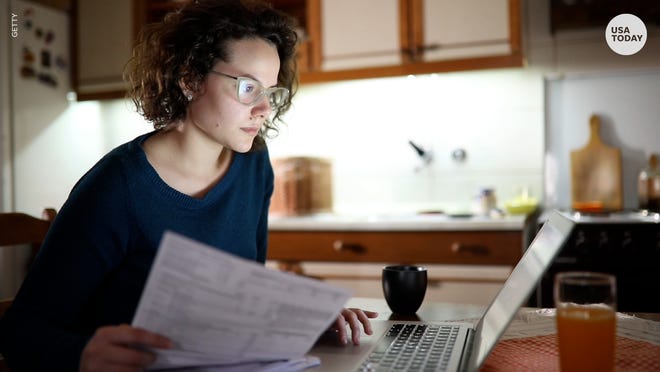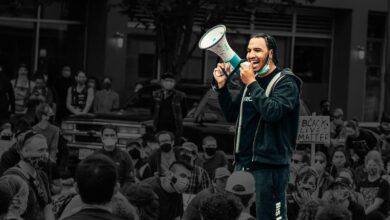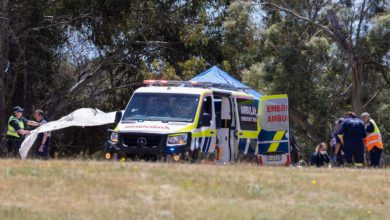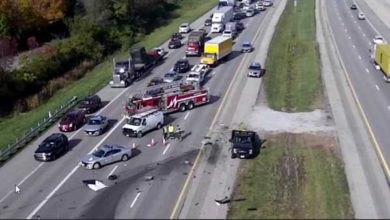
A federal program that failed to fulfill its promise of offering student debt relief to thousands of public workers, including teachers, police officers and firefighters, is trying to correct its ways.
On Wednesday, the U.S. Department of Education announced sweeping changes to its Public Service Loan Forgiveness program after thousands of borrowers applied for forgiveness, with nearly all of them being rejected by the federal government.
After making a decade of payments, many found out that they had the wrong type of federal loan or repayment plan to be eligible for the program. Thousands have been straddled with debt that they thought would be erased.
►Student loan forgiveness:Half a million people to benefit from overhaul, some immediately
►Millennials quit jobs to day trade:Here's the risk, reward.
Under temporary changes through October 2022, those borrowers will be eligible to get their loans cleared.
The overhaul is also designed to let borrowers correct errors and count payments they were trying to make toward the program. It is expected to shorten the amount of time more than 550,000 borrowers – those who have already consolidated their loans – are required to make payments to qualify for forgiveness, the government said.
The changes will immediately erase the debt of 22,000 borrowers to the tune of $1.7 billion, the agency said. The government estimated another 27,000 borrowers could see about $2.8 billion in debts forgiven if they prove they were employed in an eligible job.
If you have these loans, here are the steps you can take to get relief:

What is a PSL loan? How did they originate?
The Public Service Loan Forgiveness is a program that was launched in 2007 in an effort to steer more college graduates into public service. As long as they made 10 years of payments on their federal student loans, the program promised to erase the remainder.
The program, however, has proved anything but forgiving. Before Wednesday’s announcement, only 16,000 borrowers had seen their debt forgiven via the program, according to the Education Department. About 1.3 million people are trying to have their debts discharged through the program.
One of the most problematic pieces of Public Service Loan Forgiveness: Many borrowers had the wrong type of loan and didn't realize they weren't eligible for relief.
When the loan forgiveness program was first introduced, many of the loans offered from the federal government were Family Federal Education Loans, or loans made through private entities but insured by the federal government.
The government stopped offering those loans in 2010 and now relies on direct loans – the kind eligible for forgiveness. The Education Department said about 60% of borrowers with an approved employer hold FFEL loans.
Who is eligible for student loan forgiveness?
The government previously restricted eligibility for the Public Service Loan Forgiveness program to only certain types of federal student loans and specific repayment plans.
However, through October 2022, borrowers who have worked 10 years in a qualifying job will now be eligible for loan relief no matter what kind of federal loan or repayment plan they have.
Past loan payments that were previously ineligible will now count, moving some borrowers closer to forgiveness. That is expected to especially help those borrowers with Federal Family Education Loans.
Among other changes, the department will allow military members to count time on active duty toward the 10 years, even if they put a pause on making their payments during that time.
If borrowers are unsure about what type of loan they have, they can request that information from their loan servicer or they can check on the federal government's website for financial aid, according to Betsy Mayotte, president of the Institute of Student Loan Advisors.
If you don't know what kind of federal loans you have, you can see which loans by logging into your account on StudentAid.gov, going to the My Aid page and scrolling down to the Loan Breakdown section.
If I qualify, what steps do I need to take?
Changes to the loan forgiveness program will take place in two parts.
The agency will first loosen some of the rules that had prevented eligible borrowers from discharging their loans, via a limited waiver. The government, for example, will allow payments on any of a person's loans to count toward the total number required for forgiveness.
The Public Service Loan Forgiveness waiver will be available to borrowers who have Direct Loans, Federal Family Education Loans and Perkins Loans.
The department said it would automatically credit borrowers who already have direct loans and have proved they work in an eligible field. Others who haven't enrolled in the program or have ineligible federal loans will have to apply for forgiveness, which may require them to consolidate their loans. Borrowers will have until October 2022 to apply.
To find out more about loan consolidation, visit StudentAid.gov/Manage-Loans/Consolidation.
The Education Department also plans to review all Public Service Loan Forgiveness applications that had been denied and to give federal employees automatic credit toward forgiveness.
Other changes will come about more slowly via regulations made by "rule-making," a lengthy and complicated bureaucratic back-and-forth between the government and other stakeholders.
For more information, visit StudentAid.gov/PSLFWaiver.
Source link









